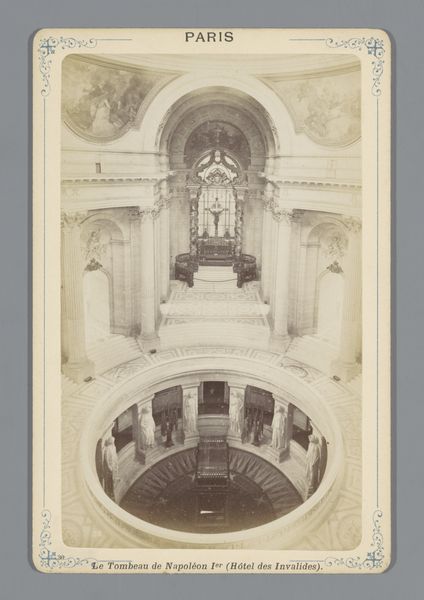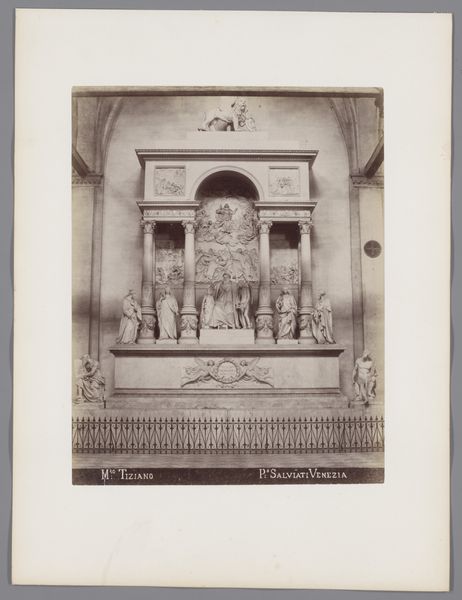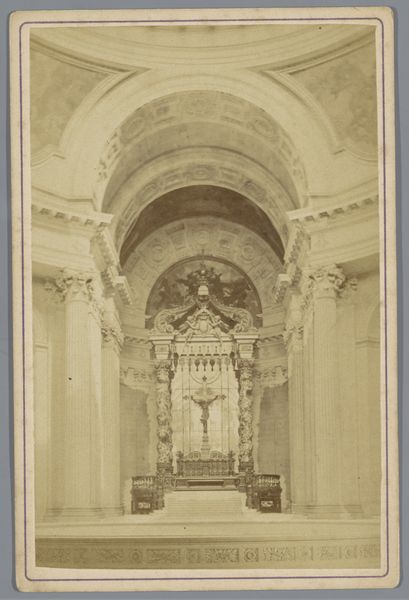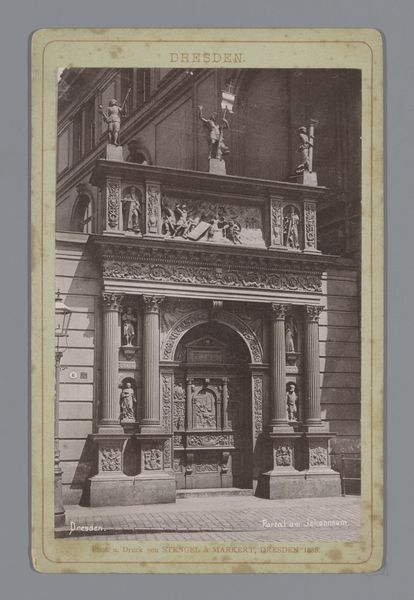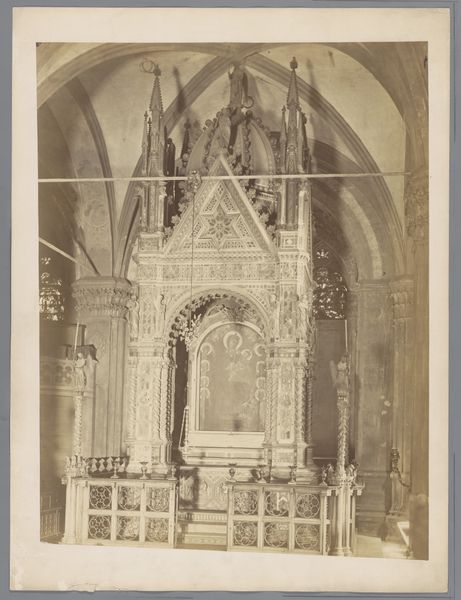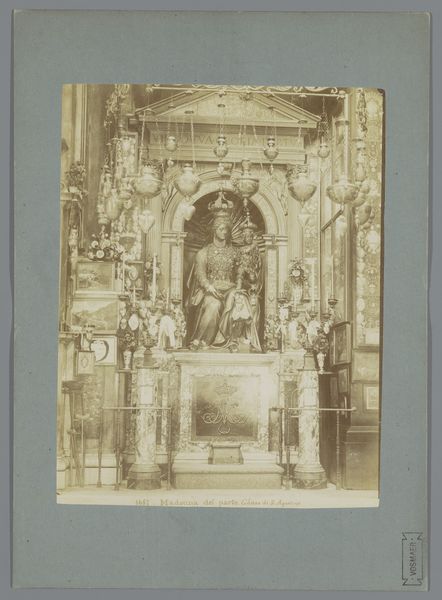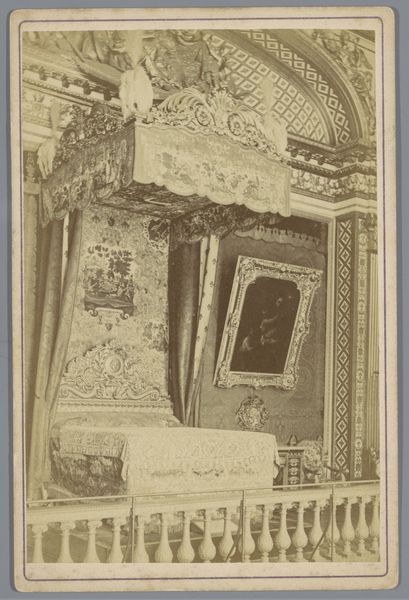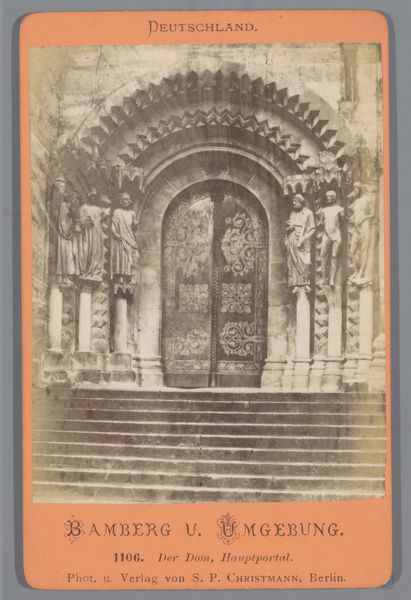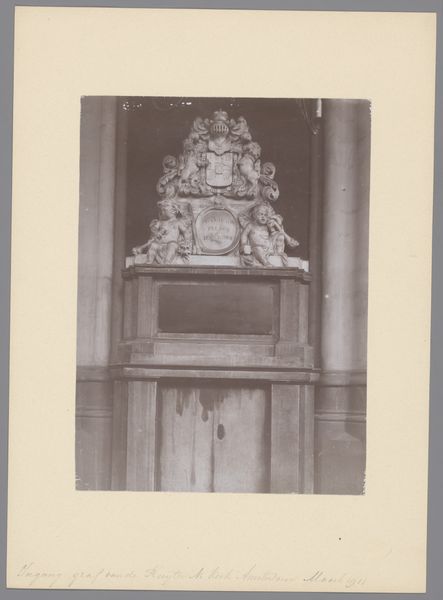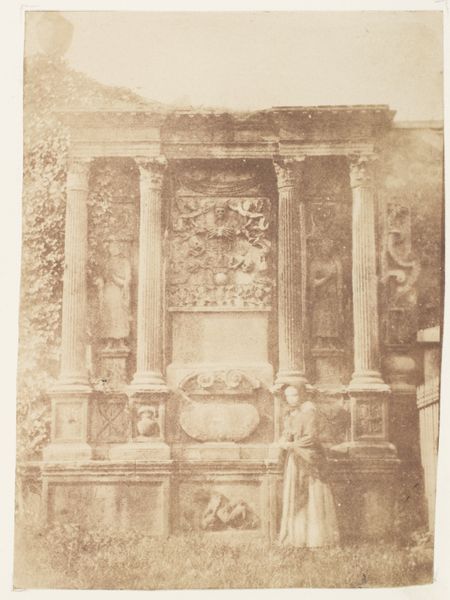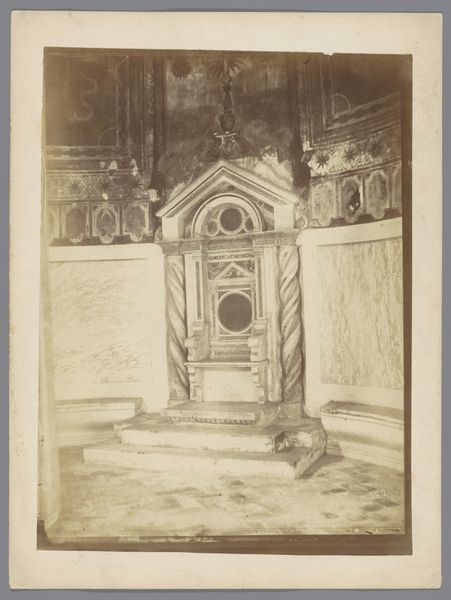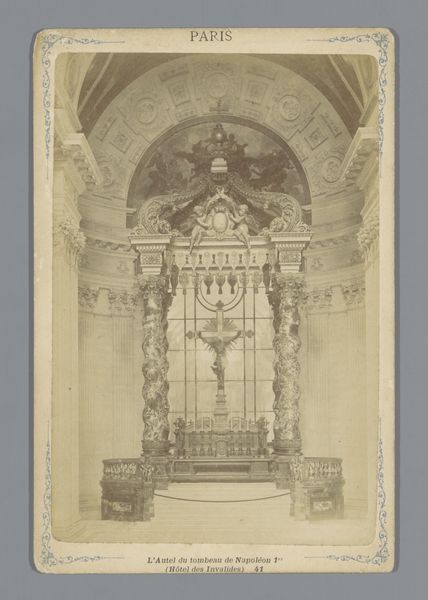
print, photography, gelatin-silver-print
#
portrait
# print
#
photography
#
gelatin-silver-print
Dimensions: height 106 mm, width 67 mm
Copyright: Rijks Museum: Open Domain
Curator: Looking at this albumen print, it’s easy to get lost in the details. The photograph, captured between 1855 and 1875 by Theodor Creifelds, showcases the Golden Chamber within the Saint Ursula Church in Cologne. Editor: My first thought is intricacy—such elaborate ornamentation! There's something almost unsettling in its density, like a visual echo of ritual. What really catches my eye is how the artist balances these sculptural elements. Curator: Exactly. Creifelds' image serves as both a documentary record and a powerful statement about the Church’s authority in that era. Think of the camera as a relatively new technology, being deployed to legitimize established power structures. The church using photography, then often considered "objective," as an endorsement is significant. Editor: Yes, and those visual signifiers are rife throughout, most obviously the crucifix positioned centrally in a protective enclosure, which almost looks like reliquaries along the altar. The repeated imagery evokes a profound sense of cultural memory, and continuity, but maybe also entrenchment. Curator: Consider too how images of venerated figures—saints perhaps or wealthy donors — were meant to communicate moral lessons or project certain political views that reinforced hierarchies and controlled narratives. Editor: Indeed, everything points towards an institutional visual strategy. The I.H.S. Christogram emblazoned on the altar cloth asserts dominion—a constant reminder. What is implied through all these components, what meanings do you perceive are subtly communicated? Curator: I am always thinking of access, who has it and who does not, particularly since this Golden Chamber holds bones associated with the legendary St. Ursula. I keep coming back to the socio-economic elements influencing this church. What kind of population are they catering to, and attempting to attract and appeal to? Editor: From my view, it acts as a stark representation of spiritual, temporal power and material richness all working in concert, and to me there's a real and somewhat uncomfortable message communicated to all audiences: “This is what we represent.” Curator: Agreed, the photographic work here invites us to reflect on what histories are being actively constructed, preserved, and visually displayed. Editor: It leaves you pondering just how powerful this potent brew of symbolism can be!
Comments
No comments
Be the first to comment and join the conversation on the ultimate creative platform.
